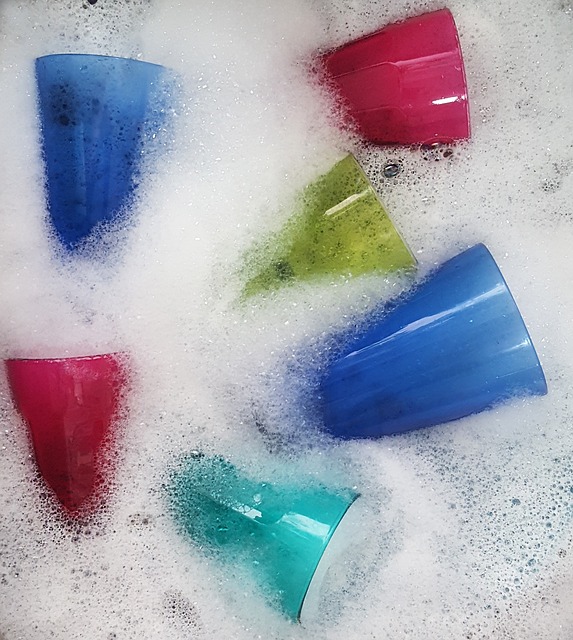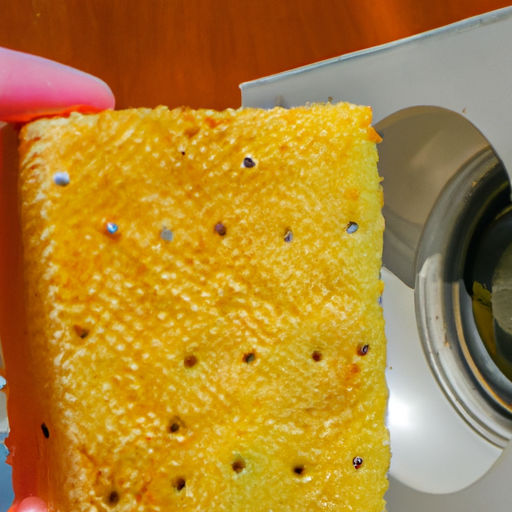Learn how to effectively clean your kitchen sponge and maintain maximum hygiene with our comprehensive guide. This guide will help you understand why it is essential to keep your kitchen sponge clean and how you can achieve it in simple steps.
Why is Cleaning Your Kitchen Sponge So Important?
Cleaning your kitchen sponge is crucial for maintaining a clean and hygienic kitchen environment. Neglecting to clean your sponge can lead to a buildup of harmful bacteria, which can contaminate your dishes and surfaces. By understanding the importance of cleaning your sponge, you can ensure maximum hygiene and prevent the spread of harmful pathogens.
- Firstly, Bacteria Breeding Ground:
Your kitchen sponge is a breeding ground for bacteria due to its damp and porous nature. When you use your sponge to clean dishes, it picks up food particles and absorbs moisture, creating an ideal environment for bacteria to thrive. Without regular cleaning, these bacteria can multiply rapidly, leading to potential health risks. - Secondly, Cross-Contamination Hazard:
Failure to clean your kitchen sponge properly can result in cross-contamination. As you use the sponge to clean various surfaces, it can pick up harmful bacteria from raw meat, poultry, or other contaminated areas. If not cleaned thoroughly, these bacteria can transfer onto your dishes, cutting boards, and countertops, posing a risk to your health. - Thirdly, Foul Odor and Mold Growth:
A neglected kitchen sponge can emit an unpleasant odor due to the accumulation of food particles and bacteria. Additionally, the warm and moist environment of a dirty sponge is ideal for mold growth. Not only can this produce a musty smell, but it can also release spores that may cause respiratory issues, especially for those with allergies or asthma.
A dirty kitchen sponge with food particles and stains.
What's Lurking in Your Sponge: A Microscopic View?
When we take a closer look at our kitchen sponges under a microscope, we are greeted by a disturbing sight. The microscopic view reveals a thriving ecosystem of bacteria, fungi, and other microorganisms. These tiny organisms find the damp and nutrient-rich environment of a dirty sponge to be the perfect habitat for their growth and reproduction.
One of the most common types of bacteria found in kitchen sponges is Escherichia coli, or E. coli, which is known to cause food poisoning. Other harmful bacteria such as Salmonella, Staphylococcus, and Campylobacter can also be present. These bacteria can survive on the surface of the sponge for extended periods, posing a constant threat to the cleanliness of your kitchen.
Fungi, including yeast and mold, are also common inhabitants of a neglected sponge. These organisms can cause respiratory issues and allergies, especially in individuals with weakened immune systems. The moist and warm environment of the sponge provides an ideal breeding ground for these fungi to grow and spread.
Apart from bacteria and fungi, viruses can also find their way onto your sponge. While they may not survive as long as bacteria, they can still pose a risk if not properly cleaned. Viruses such as norovirus, which causes gastroenteritis, can contaminate your sponge, making it essential to take thorough cleaning measures.
How Can You Clean Your Sponge Effectively?
Cleaning your kitchen sponge effectively is crucial to eliminate the harmful microorganisms that reside within it. Here are some practical and effective methods to ensure maximum cleanliness.
- 1. Microwaving:
Place a damp sponge in the microwave and heat it on high for around one minute. The heat generated by the microwave will help kill most of the bacteria and fungi present in the sponge. - 2. Soaking in Bleach Solution:
Create a solution of one-part bleach and nine parts water. Soak the sponge in this solution for about five minutes, then rinse thoroughly with water. Bleach is known for its strong disinfecting properties, making it an effective method to sanitize your sponge. - 3. Dishwasher:
Toss your sponge in the dishwasher along with your regular load of dishes. Make sure to use a hot water cycle to ensure thorough cleaning and disinfection. - 4. Vinegar Soak:
Fill a bowl with equal parts water and white vinegar. Submerge the sponge in the mixture and let it soak for at least 15 minutes. Vinegar has antimicrobial properties that can help eliminate bacteria and fungi. - 5. Replace Regularly:
No matter how well you clean your sponge, it will eventually wear out and become a breeding ground for bacteria. It is recommended to replace your kitchen sponge every two to four weeks to maintain optimal cleanliness.
A step-by-step demonstration of how to clean a kitchen sponge using a microwave.
"Cleanliness is next to godliness": The Best Practices for Sponge Hygiene
Maintaining proper sponge hygiene is essential for a clean and healthy kitchen. Here are some best practices to follow:
- 1. Store Properly:
After using your sponge, make sure to rinse it thoroughly with hot water and squeeze out any excess moisture. Store it in a well-ventilated area, away from direct sunlight, to prevent the growth of bacteria. - 2. Avoid Cross-Contamination:
Use separate sponges for different tasks, such as one for dishes and another for countertops. This helps prevent the spread of bacteria from one surface to another. - 3. Don't Wipe Up Spills:
Avoid using your sponge to wipe up spills or messes on the floor. This can introduce harmful bacteria from the floor into your sponge, increasing the risk of contamination. - 4. Regular Disinfection:
In addition to regular cleaning, it's important to disinfect your sponge at least once a week. This will help kill any remaining bacteria and ensure maximum hygiene. - 5. Be Mindful of Sponge Lifespan:
While cleaning your sponge regularly is important, it's equally crucial to know when to replace it. If your sponge starts to smell bad, shows signs of wear and tear, or becomes discolored, it's time for a new one.
How to Clean Your Kitchen Sponge for Maximum Hygiene:
| Step | Instructions | Time Needed | Tools Needed |
|---|---|---|---|
| 1. Rinse off the sponge | Rinse the sponge with warm water to remove any visible dirt or debris. | 1-2 minutes | None |
| 2. Soak the sponge in hot water | Soak the sponge in hot water for at least five minutes to help kill any bacteria. | 5 minutes | Hot water |
| 3. Clean the sponge with a brush | Use a soft-bristled brush to scrub the sponge, paying special attention to the crevices and ridges. | 2-3 minutes | Soft-bristled brush |
| 4. Rinse the sponge again | Rinse the sponge with warm water to remove any dirt or debris. | 1-2 minutes | None |
Maintaining a clean kitchen sponge is not just about keeping your kitchen tidy, but it's about safeguarding your health as well. By following these tips, you can ensure that your kitchen sponge is bacteria-free, ensuring safer and cleaner cooking experiences.



